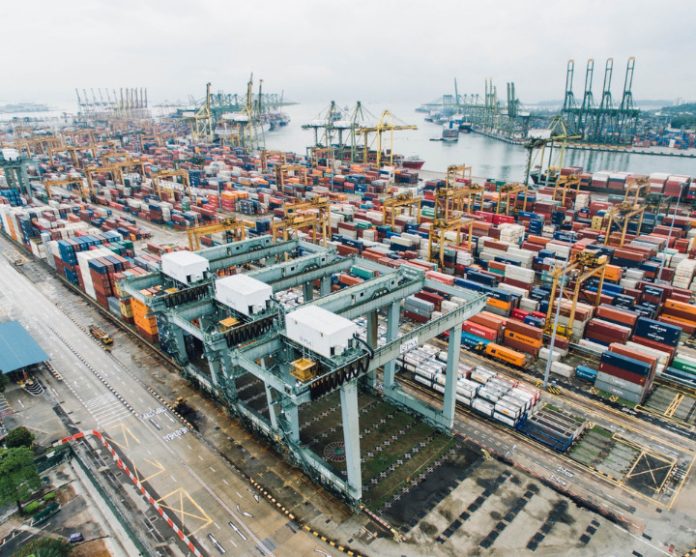
-
Vietnam’s planned US$6 billion “super port” in Can Gio in the south of the country should be resized as it’s too far from trade-rich Strait of Malacca to attract major liners, an expert says
-
Can Gio port is envisioned to handle 10-15 million TEUs annually and become Southeast Asia’s fourth largest gateway after Singapore port, Port Klang and Tanjung Pelepas
-
Tran Nguyen, a researcher and lecturer at École de Management de Normandie in France, says Can Gio’s big challenge is how to the flow of ships calling on the Malacca Strait ports
Vietnam is planning to build US$6 billion Can Gio super port in the south of the country as Southeast Asia’s fourth largest gateway, but a Vietnamese maritime researcher says that the government may need to reconsider the project’s size as its distance from the Strait of Malacca trade corridor may keep away the major ocean liners.
Proponents envision Can Gio port to handle 10-15 million TEUs (20-foot equivalent units) annually and become Southeast Asia’s fourth super port after Singapore’s 37.47 million TEUs and the two Malaysian hubs of Port Klang, with 13.72 million TEUs, and Tanjung Pelepas, with 11.2 million TEUs.
With revenues averaging $200/TEU, Can Gio can earn $2-3 billion annually, excluding income from ancillary activities, says Dr. Tran Nguyen, a researcher and lecturer at École de Management de Normandie in France with many years of experience working in Germany and Singapore. Tran focuses on sea transport, ports and supply chains.
The proposed site is way too far from the three megaports on the Strait of Malacca that account for 54% of the region’s throughput and are all transit hubs of the world’s largest shipping lines that carry around 51 million TEUs a year, Tran said in a contributed article published on VN New Express newspaper.
“The challenge for Can Gio is how to capture the flow of ships from these super ports, especially Singapore and Tanjung Pelepas, which have modern technology and are part of a dense network of sea connections,” Tran said.
Located on the remote island of Phu Loi, Can Gio port loses its advantage in accessing the rich southern markets compared with existing port clusters. The port can only target transshipment goods from other Southeast Asian countries, Tran said.
Two main services that an international container transport offers are gateway and transshipment, said the researcher, who defines a gateway port as at the beginning or end of the container ocean freight chain, and a transshipment port as an intermediary for moving containers between lines of ships.
“The market for a gateway port is the inland area (hinterland) connected to the port by road, rail or river transport. The market for a transshipment port is other ports via sea. If a gateway port is associated with home field advantage, a transshipment port depends on the ability to attract goods from the away field. Both models can exist side by side in a port,” Tran said.
In contrast, the ports in the Malacca Strait serve as major hubs not only for Southeast Asia but also for goods to and from the Middle East, South Asia, Oceania, and Africa.
“According to our recent survey of the international container shipping network, these three ports account for 68% of the weekly shipments of MSC, the world leader in global container shipping, and 51% of CMA-CGM (No.3) in Southeast Asia,” Tran said.
He emphasized that Singapore’s Tuas megaport, built initially in 2022 and to be fully completed in 2040, will have a total value of $14 billion and a capacity of 40 million TEUs to keep Singapore’s top position. A third expansion phase until 2030 costing over $3 billion has also been planned to double the capacity of Malaysia’s Tanjung Pelepas, he said.
Located 616 nautical miles or 1,141 kilometers from the Strait of Malacca (1.5 days of travel), Tran said Can Gio loses out to Singapore or Tanjung Pelepas in capturing Eurasian or intra-Asian cargo flows.
He said the advantage for Can Gio lies in its being along the transpacific shipping lane 531 nautical miles closer to the US West Coast than Singapore and Tanjung Pelepas. But its potential investor, MSC, has only 13% – or not more than 3.5 million TEUs – of its 22 million TEU total capacity in Southeast Asia using the transpacific route.
“The chances of Vietnam replacing Singapore as the main hub for MSC in the region are low, but we can provide them with a second hub next to Singapore, like Le Havre (France) in Europe (1.8 million TEUs). In this case, the size and even the location, of [Can Gio] is something that needs to be reconsidered,” Tran said.
“Turning a remote island into a ‘supermarket on the sea’ is the dream of everyone operating in Vietnam’s seaport and logistics industry.”
He concluded that issues such as how to optimally exploit the existing system, attract mother ships to call directly and upgrade transportation links to cut logistics costs and transportation time for goods.
RELATED READ: Vietnam seaports see slim volume growth




